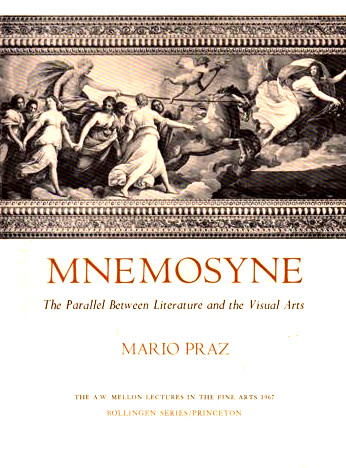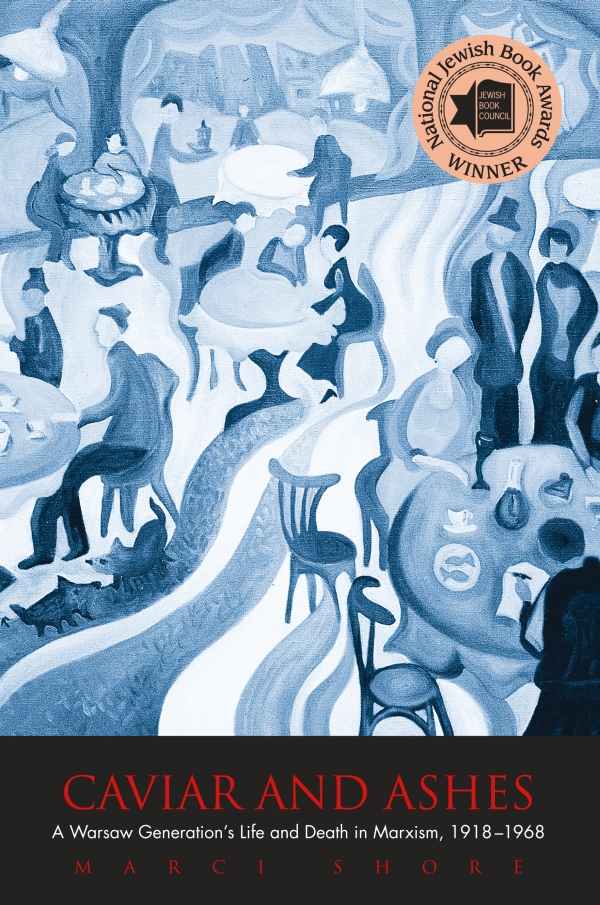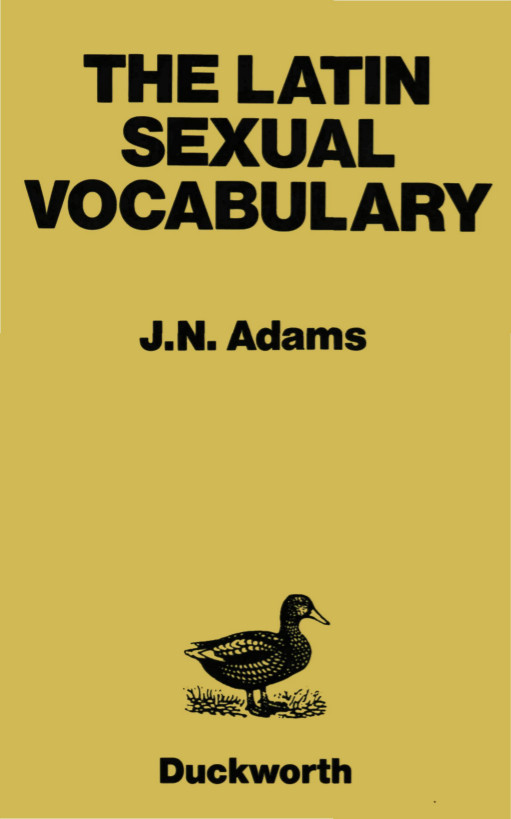Mario Praz: Mnemosyne: The Parallel Between Literature and the Visual Arts (1970–) [English, Spanish]
Filed under book | Tags: · art, art history, art theory, history of literature, literary theory, literature, memory, poetry

In his search for the common link between literature and the visual arts, Professor Praz draws upon the abundant evidence of long mutual understanding and correspondence between the sister arts. Although parallels of theme and inspiration are plentiful, he is not primarily concerned with these. Rather, he examines the close relationship or air de famille between the expression of the arts in any given epoch.
Each epoch has “its peculiar handwriting or handwritings, which, if one could interpret them, would reveal a character, even a physical appearance.” Although handwriting is taught and some of its characteristics thus belong to the general style of the period, the personality of the writer does not fail to pierce through. Something of the same sort, the author proposes, occurs in art. The kinship of literature and painting rests on this circumstance: a work of art, whether visual or literary, must use the distinctive “handwriting” of its particular age, even as its originality pierces through this handwriting.
The likeness between the arts within various periods of history can ultimately be traced, then, to structural similarities — similarities that arise out of the characteristic way in which the people of a certain epoch see and memorize facts aesthetically. Mnemosyne, at once the goddess of memory and the mother of the muses, therefore presides over this view of the arts. In illustrating her influence, Professor Praz ranges widely through Western sources, both literary and pictorial. (from the dust jacket)
The A.W. Mellon Lectures in the Fine Arts, 1967
Publisher Princeton University Press, 1970
Bollingen Series XXXV, 16
ISBN 9780691098579
261 pages
Review (E.H. Gombrich, 1972)
Review (D.C., Spenser Newsletter, page 3, 1971)
Review (in Japanese)
Publisher (EN)
Mnemosyne: The Parallel between Literature and the Visual Arts (English, 1970)
Mnemosyne: El paralelismo entre la literatura y las artes visuales (Spanish, trans. Ricardo Pochtar, 1979, no OCR, via Daniel Ferreira)
Marci Shore: Caviar and Ashes: A Warsaw Generation’s Life and Death in Marxism, 1918-1968 (2006)
Filed under book | Tags: · art, art history, avant-garde, communism, futurism, history of literature, literature, marxism, poland

“‘In the elegant capital city of Warsaw, the editor Mieczyslaw Grydzewski would come with his two dachshunds to a café called Ziemianska.’ Thus begins the history of a generation of Polish literati born at the fin de siècle. They sat in Café Ziemianska and believed that the world moved on what they said there. Caviar and Ashes tells the story of the young avant-gardists of the early 1920s who became the radical Marxists of the late 1920s. They made the choice for Marxism before Stalinism, before socialist realism, before Marxism meant the imposition of Soviet communism in Poland. It ended tragically.
Marci Shore begins with this generation’s coming of age after the First World War and narrates a half-century-long journey through futurist manifestos and proletarian poetry, Stalinist terror and Nazi genocide, a journey from the literary cafés to the cells of prisons and the corridors of power. Using newly available archival materials from Poland and Russia, as well as from Ukraine and Israel, Shore explores what it meant to live Marxism as a European, an East European, and a Jewish intellectual in the twentieth century.”
Publisher Yale University Press, 2006
ISBN 0300110928, 9780300110920
457 pages
Reviews: Irena Grudzińska-Gross (The Polish Review), Robert Blobaum (The American Historical Journal), Matthew Kaminski (The Wall Street Journal).
PDF (updated on 2020-12-2)
Comment (0)J.N. Adams: The Latin Sexual Vocabulary (1982)
Filed under book | Tags: · body, history of literature, language, latin, linguistics, literature, philology, sex, sexuality

Like other languages, Latin had a group of words which speakers regarded as basic obscenities, as well as a rich stock of sexual euphemisms and metaphors. At the lower end of the social and stylistic scale evidence for Latin sexual terminology comes from numerous graffiti. On the other hand certain literary genres had a marked sexual content.
The Latin sexual vocabulary has never been systematically investigated, despite its linguistic and literary interest. This book collects for the first time the evidence provided by both non-literary and literary sources from the early Republic down to about the fourth century A.D.
Separate chapters are given to each of the sexual parts of the body, and to the terminology used to describe sexual acts. General topics treated include lexical differences between various literary genres, the influence of Greek on Latin, diachronic changes within the vocabulary, and the weakening of sexual words into general terms of abuse.
This is a fundamental book in every sense.
Publisher Duckworth, London, 1982
ISBN 071561648X
272 pages
via Gabriela García Palapa
Review (Peter Parsons, London Review of Books, 1983)
Review (D.R. Shackleton Bailey, Classical Philology, 1985)
PDF (72 MB)
Comment (0)
